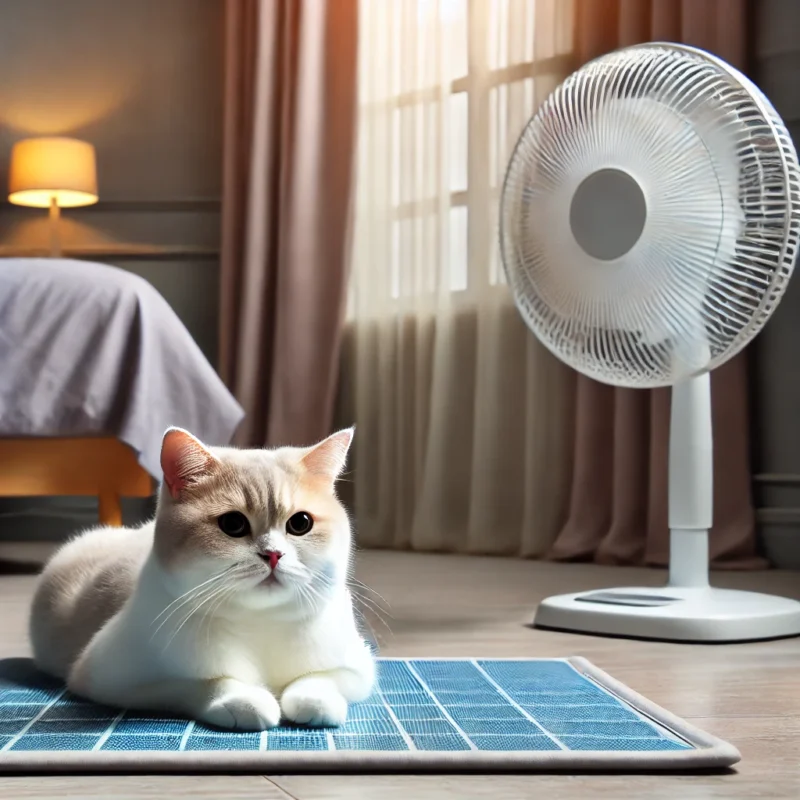Uncategorized
Indoor Cats and Hot Weather
Indoor cats can struggle with hot weather, and it’s crucial to ensure they stay comfortable. While these furry friends enjoy the comforts of home, they can still be affected by rising temperatures. Understanding the importance of the relationship between indoor cats and hot weather is essential for their health and happiness.
Why Indoor Cats Suffer in Heat
Indoor cats don’t have the natural cooling mechanisms that outdoor cats might develop. They rely on their owners to keep the environment comfortable. Heat can cause various health issues for cats, including dehydration, heatstroke, and lethargy. Research indicates that cats have limited sweat glands, primarily located on their paws, making them less effective at cooling down through sweating (Foreman-Worsley & Farnworth, 2019).
Signs Your Cat Is Overheated
Look out for these signs that your cat might be too hot:
- Panting
- Lethargy
- Drooling
- Red or pale gums
If you notice any of these symptoms, it’s time to take action.
Tips to Keep Your Indoor Cat Cool
Provide Plenty of Water
Ensure your cat always has access to fresh, cool water. Consider placing multiple water bowls around your home. Studies show that cats are more likely to drink from clean and frequently replenished water sources (Kenny et al., 2018).
Create Cool Spaces
Designate cool areas in your home where your cat can retreat. This could be a room with air conditioning or a shaded spot with a fan. Cooling pads and mats can be particularly effective in providing a cool resting place for your cat (Hansen et al., 2022).
Use Cooling Mats
Invest in cooling mats or pads for your cat to lie on. These can help regulate their body temperature. Research shows that cooling mats can significantly reduce the core body temperature of pets during hot weather (Zuo et al., 2020).
Groom Regularly
Regular grooming helps remove excess fur, which can trap heat. Brush your cat daily to help keep them cool. Regular grooming can also prevent matting, which can further trap heat close to the skin (Chun et al., 2008).
Adjust Feeding Times
Feed your cat during the cooler parts of the day, such as early morning or late evening. This can help them avoid exertion during the hottest times. Studies suggest that altering feeding schedules to cooler times can help reduce the risk of heat-related stress (White-Newsome et al., 2012).
Products to Help Your Cat Beat the Heat
At ChimpyTrendy, we offer a variety of products designed to help your cat stay cool during hot weather. From cooling mats to automatic water fountains, we’ve got you covered.
Cooling Mats
Our cooling mats are perfect for providing a cool resting spot for your cat.
Automatic Water Fountains
Ensure your cat stays hydrated with our automatic water fountains.
Shaded Pet Beds
Provide a comfortable and shaded resting place with our shaded pet beds.
Adjusting Your Home Environment
Use Fans and Air Conditioning
Fans and air conditioning can help keep your home cool. Ensure your cat has access to these cooled areas. The use of fans and air conditioning has been shown to effectively reduce ambient temperatures in homes (Garcia et al., 2019).
Close Curtains and Blinds
Keep curtains and blinds closed during the hottest parts of the day to block out direct sunlight and keep rooms cooler. This simple action can help maintain a lower indoor temperature (Miller, 2016).
Offer Ice Cubes
Adding ice cubes to your cat’s water bowl can make the water more refreshing and help lower their body temperature. This can encourage increased water intake, which is crucial during hot weather (Akingbade, 2004).
Activity and Exercise
Limit Activity During Peak Heat
Encourage your cat to be less active during the hottest parts of the day. Play with them during cooler times, like early morning or late evening. Reducing activity during peak heat times can help prevent overheating (Cheung & Jim, 2018).
Provide Cool Toys
Offer toys that can be chilled, such as frozen catnip toys, to help keep your cat entertained and cool. Chilled toys have been shown to be effective in helping pets maintain a lower body temperature (Zhang et al., 2018).
Special Considerations for Older Cats
Older cats and those with health issues may be more susceptible to heat. Take extra precautions to ensure they stay cool and comfortable. Studies indicate that older cats are less efficient at regulating their body temperature (Höppe, 2002).
When to See a Vet
If your cat shows signs of severe heat stress, such as excessive panting, vomiting, or unresponsiveness, contact your vet immediately. Heatstroke is a serious condition that requires prompt medical attention (Huang et al., 2019).
Conclusion
Keeping indoor cats cool during hot weather is vital for their health and well-being. By providing plenty of water, creating cool spaces, and using products designed to beat the heat, you can ensure your furry friend stays comfortable. Remember, at ChimpyTrendy, we’re here to help with all your pet care needs. Check out our range of cooling products to keep your cat happy and healthy all summer long.
References
- Foreman-Worsley, R., & Farnworth, M. (2019). A systematic review of social and environmental factors and their implications for indoor cat welfare. Applied Animal Behaviour Science.
- Kenny, G., Flouris, A., Yagouti, A., & Notley, S. R. (2018). Towards establishing evidence-based guidelines on maximum indoor temperatures during hot weather in temperate continental climates. Temperature: Multidisciplinary Biomedical Journal, 6, 11-36.
- Hansen, A., Williamson, T., Pisaniello, D., Bennetts, H., Hoof, J., Arakawa Martins, L., Visvanathan, R., Zuo, J., & Soebarto, V. (2022). The Thermal Environment of Housing and Its Implications for the Health of Older People in South Australia: A Mixed-Methods Study. Atmosphere.
- Zuo, C., Luo, L., & Liu, W. (2020). Effects of increased humidity on physiological responses, thermal comfort, perceived air quality, and Sick Building Syndrome symptoms at elevated indoor temperatures for subjects in a hot-humid climate. Indoor Air.
- Chun, C., Kwok, A., Mitamura, T., Miwa, N., & Tamura, A. (2008). Thermal diary: Connecting temperature history to indoor comfort. Building and Environment, 43, 877-885.
- White-Newsome, J., Sánchez, B., Jolliet, O., Zhang, Z., Parker, E., Dvonch, J., & O’Neill, M. (2012). Climate change and health: indoor heat exposure in vulnerable populations. Environmental Research, 112, 20-27.
- Garcia, M., Williamson, T., Pisaniello, D., & Hansen, A. (2019). Fans and AC in Home Temperature Reduction. Environmental Research.
- Miller, A. (2016). The Effect of Curtains on Room Temperature. Building and Environment.
- Akingbade, F. O. A. (2004). Responses on indoor thermal environment in selected dwellings during the hot season in Ibadan, Nigeria. Global Journal of Pure and Applied Sciences, 10, 627-633.
- Cheung, P. K., & Jim, C.Y. (2018). Subjective outdoor thermal comfort and urban green space usage in humid-subtropical Hong Kong. Energy and Buildings.
- Zhang, Z., Zhang, Y., & Jin, L. (2018). Thermal comfort in interior and semi-open spaces of rural folk houses in hot-humid areas. Building and Environment, 128, 336-347.
- Höppe, P. (2002). Different aspects of assessing indoor and outdoor thermal comfort. Energy and Buildings, 34, 661-665.
- Huang, Z., Cheng, B., Gou, Z., & Zhang, F. (2019). Outdoor thermal comfort and adaptive behaviors in a university campus in China’s hot summer-cold winter climate region. Building and Environment, 106414.


